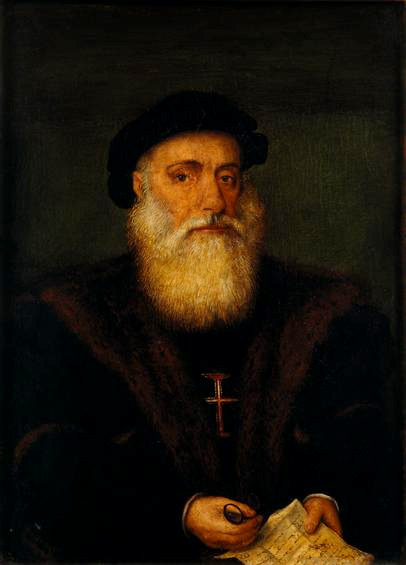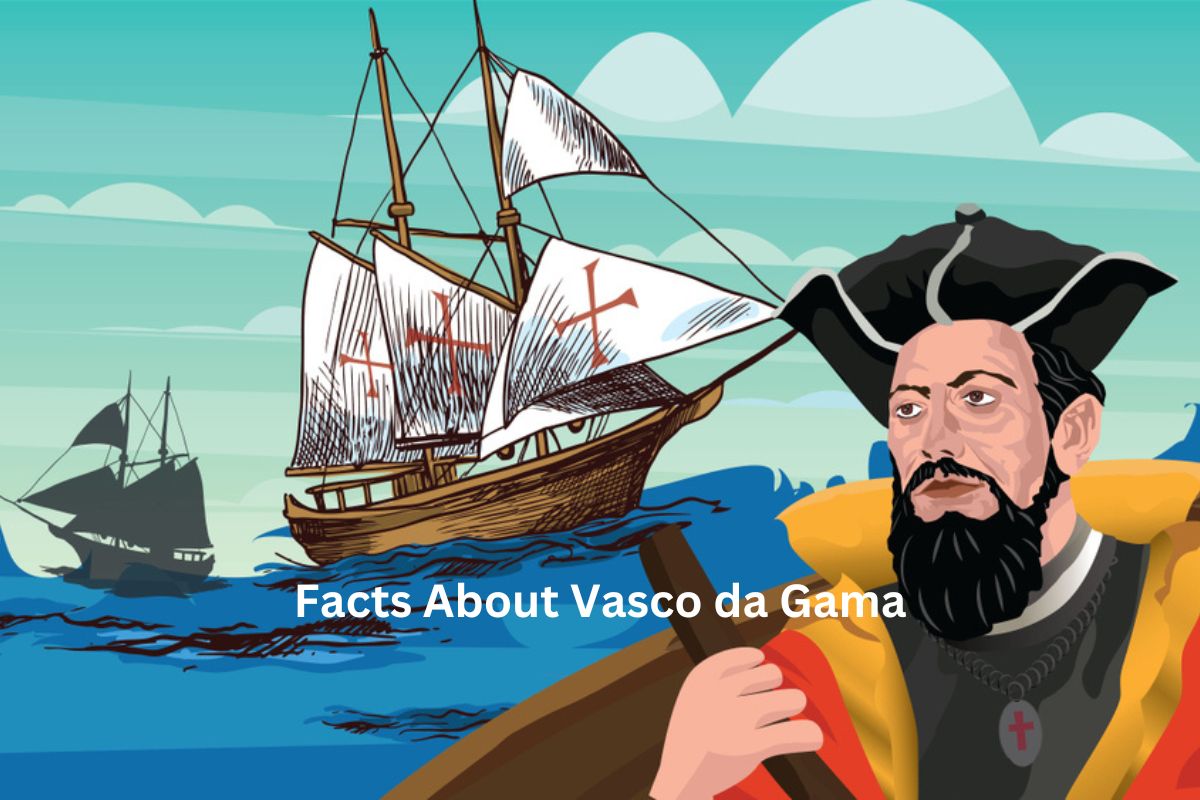Vasco da Gama, a Portuguese explorer born around 1460, stands as a central figure in the Age of Discovery.
Renowned for his groundbreaking maritime expeditions, he achieved the remarkable feat of being the first European to chart a direct sea route from Europe to India.
His daring voyages not only reshaped global trade but also brought significant changes to the course of history.
This brief overview delves into his accomplishments, navigational prowess, diplomatic endeavors, and enduring legacy.
Vasco da Gama Facts
1. Portuguese explorer born around 1460
Vasco da Gama was a renowned Portuguese explorer born around 1460 in the town of Sines, Portugal. He came from a noble family with a long history of involvement in maritime activities. This background likely influenced his interest in exploration and navigation.

2. First European to sail from Europe to India by sea (1497-1498)
Vasco da Gama’s most famous achievement was his pioneering voyage to India. In 1497, he embarked on a historic expedition with a fleet of four ships:
- São Gabriel
- São Rafael
- Berrio
- A supply ship
His mission was to find a direct sea route to India, as the overland trade routes were controlled by intermediaries who made the prices of valuable spices, such as pepper and cinnamon, prohibitively high for European markets.
3. Reached Calicut, India, in 1498, opening a direct trade route
After a challenging and arduous journey, Vasco da Gama’s fleet reached the shores of Calicut (Kozhikode) on the southwestern coast of India on May 20, 1498.
Also Read: Vasco da Gama Timeline
This marked the first successful European voyage to India via an all-sea route, bypassing the need to traverse the dangerous and costly land routes through the Middle East.
This achievement had significant implications for global trade and diplomacy, as it allowed Europeans direct access to the rich markets of Asia.
Vasco da Gama’s successful voyage not only opened new avenues for commerce but also paved the way for subsequent European exploration and colonization in the Indian Ocean region and beyond. His navigation skills, tenacity, and willingness to venture into the unknown contributed to this historic feat.
4. Strengthened Portugal’s influence in the Indian Ocean spice trade
Vasco da Gama’s successful voyage to India had a profound impact on Portugal’s influence in the Indian Ocean spice trade.
By establishing a direct sea route to the source of valuable spices, such as pepper, cinnamon, and cloves, Portugal gained a competitive edge over other European powers and Middle Eastern traders.
Also Read: Accomplishments of Vasco da Gama
The direct access to these spices allowed Portugal to cut out intermediaries and establish direct trade relationships with the regions producing them. This led to increased profits for Portugal and laid the foundation for its dominance in the Indian Ocean trade for several decades.
5. Led a second voyage in 1502 for trade and diplomacy
In 1502, Vasco da Gama embarked on a second voyage to India, this time with a larger fleet and a more pronounced diplomatic role.
His mission included not only trade but also diplomatic engagements with local rulers and establishing alliances that would secure Portuguese interests in the region.
This voyage aimed to solidify Portugal’s presence and strengthen its position against rival traders and colonial powers. It also showcased Vasco da Gama’s versatility as both an explorer and a diplomat.
6. Faced conflicts with local powers and trade networks
While Vasco da Gama’s expeditions brought immense opportunities, they also encountered resistance and competition. Local rulers, traders, and established empires in the Indian Ocean region were not always receptive to the Portuguese presence.
Vasco da Gama had to navigate through various challenges, including political tensions, rival traders, and conflicts with local powers. These challenges highlighted the complexities of establishing and maintaining trade routes in regions with established trade networks and interests.
Despite the conflicts, the Portuguese managed to establish a significant presence in key trading posts along the coast of Africa and India.
7. Died in Cochin, India, on December 24, 1524
After Vasco da Gama’s second voyage to India, he continued to be involved in maritime and administrative affairs.
He was appointed as the Viceroy of India in 1524. However, his time as viceroy was marked by conflicts and challenges, and he struggled to maintain Portuguese dominance in the region.
Tragically, Vasco da Gama’s life was cut short when he passed away on December 24, 1524, in Cochin, India. His death marked the end of an era for Portuguese exploration in the Indian Ocean.
8. Used advanced navigation techniques for his time
Vasco da Gama’s navigational skills and techniques played a crucial role in the success of his voyages. He used traditional methods like dead reckoning, astrolabes, and cross-staffs to determine his ships’ positions at sea.
He also utilized more advanced tools like quadrant and compass. These navigation methods allowed him to accurately plot his course, contributing to the success of his groundbreaking voyages.
9. Celebrated in the Portuguese epic poem “Os Lusíadas”
Vasco da Gama’s achievements were immortalized in the epic poem “Os Lusíadas” (The Lusiads), written by the Portuguese poet Luís de Camões. Published in 1572, the poem celebrates the exploits of Vasco da Gama and other Portuguese explorers.
The work is not only a literary masterpiece but also an important cultural artifact that symbolizes Portugal’s maritime heritage and its role in global exploration.
10. His voyages contributed to the Age of Discovery and global exploration
Vasco da Gama’s voyages were pivotal in shaping the course of history. They marked the beginning of the Age of Discovery, a period characterized by extensive exploration, colonization, and the establishment of trade routes that connected the continents.
The successful establishment of a sea route to India changed the dynamics of global trade, contributing to the rise of European dominance in world affairs. The consequences of this era, both positive and negative, continue to influence the modern world.
